Travel to the north of Iran by Train and enjoy the most scenic routes along the Caspian Sea and Alborz Mountains range
| TOUR CODE | 154-STN-MLT | |||||
| START | Tehran | |||||
| FINISH | Tehran | |||||
| REGION(S) | Tehran, North, and Northeast of Iran | |||||
| INCLUDED |
|
|||||
| NOT INCLUDED | Entry fee for the sites not mentioned in the itinerary Travel insurance International airfare Excess baggage charges Airport and departure taxes Any extra hotel costs such as early check in or late checkout Laundry Mini bar used in the room Meals not stipulated in the itinerary Tips (optional) Cost of medical immunizations Bottled water Phone calls Any other service not mentioned in the itinerary |
|||||
- Be mesmerized by the Alborz Mountains scenic sceneries
- Enjoy the spectacular routes on the Trans-Iranian Railway (UNESCO)
- Immerse in the beauties of ancient Hyrcanian Forests (UNESCO)
- Visit Tehran the capital and its only UNESCO site (Golestan Palace)
- Go through Gaduk tunnel– the longest tunnel in Iran
- Pass through Veresk Bridge, an engineering masterpiece
- Photography of natural, cultural, and Off the Beaten Path attractions in Golestan Province
- Explore Golestan National Park, the first Iranian National Park
- A visit to Gomishan Wetland, a valuable genetic resource
- Take a stroll in Ziarat Village
- Go and see Jahan Nama protected zone, Iran’s 2nd vast protected area
- Be amazed at the Great Wall of Gorgan
- Pay a visit to Gonbad-e Qabus (UNESCO)
- Communicate with and take photos of locals in Turkmen Plain
The north part of Iran is where natural phenomena, especially the Caspian Sea in the north and the Alborz Mountains range extending for about 900 km along its southern coast (from Azarbaijan to Khorasan), unite together to create an astonishing diverse scenery. Alborz Mountains range shapes such an ecological barrier between the Caspian Sea in the north and the central part of Iran that the northern slopes contrast sharply with the southern slopes regarding the landscapes, climate, and even cultural features. While the northern slopes encompassing dense ancient Hyrcanian Forests (UNESCO) form the most verdant district of Iran, the southern slopes surprisingly embrace the dry and desert lands.
Moreover, going along the west coast to the east coast of the Caspian Sea, you will be amazed at the variety of diversity in Iranian ethnic groups. In the northeast of Iran and on the southeastern coast of the Caspian Sea, you could visit Turkman people with different customs, clothes, physical features, and even language. The difference is so big that you think you may have entered another country!
To add more beauty to this amazing cultural and geographical diversity, imagine a whistling train crawling up and down through the soaring mountains, the spiral tunnels, deep gorges, desert lands, and vast green plains. What if you are a passenger on this train? Riding on a train and watching out through the train windows, Mother Nature offers generously a unique variety of natural and geographical landscapes. While you are mesmerized by the vast desert land this moment, you will be surprised by the dense jungles another moment! That is why the Trans-Iranian Railway was registered on the UNESCO Heritage List in 2021 as one of the engineering masterpieces of the 20th century. The Trans-Iranian Railway connects the Caspian Sea in the northeast with the Persian Gulf in the southwest of Iran (Bandar-e Torkaman in the northeast to Bandar-e Imam Khomeini in the southwest). The railway passes through the two main mountain ranges of Iran, Alborz and Zagros Mountains ranges, rivers, forests, plains, and incredibly four distinct climatic areas. The construction of the 1,394kilometer-long Trans-Iranian railway (out of 14,078 Kilometers of Iran’s railroad network) started in 1927 and was completed after a decade in 1938. Covering a rough mountainous area of 5784 ha, it was a turning point in Iran’s contemporary history. 43 construction contractors from different countries collaborated to execute the project successfully. The railway is adorable for not only its scale, but also the engineering works it required to overcome rough roads, steep routes, and outlying mountain ranges. Finally, the plan became a reality through the construction of 174 large and 186 small bridges, as well as 224 tunnels. The Trans-Iranian Railway construction was all funded by national taxes.
This tour that is operated from Tehran to Gorgan encompasses around 462.5 km of the whole 1,394 km of the Trans-Iranian Railway.
On this tour, we will explore the northern branch of the Trans-Iranian Railway (UNESCO) from Tehran the capital to Bandar-e Torkaman (and then farther to Gorgan) in the north part of Iran.
This tour is a picturesque train journey on the eastern part of the Trans-Iranian Railway(UNESCO). So, be prepared with your camera all the way through to capture the special moments. Our unforgettable journey starts in Tehran the Capital. A populous metropolis offering an amalgam of traditional and modern attractions and people. After taking a city tour in Tehran and visiting Golestan Palace (the only UNESCO site in the capital), palaces, museums, bazaars, and other sightseeing, we leave Tehran for Shirgah by train. During our train trip, there is a lot to see and enjoy. Do not take your eyes off the train windows! En route, the train passes along Bon-e Kuh, an example of preparatory stations of the early years of Iran’s railway, and the scenic plains of Simindasht (Silver Plain) and Zarindasht (Golden Plain) with their colorful landforms formed by erosion. The contradiction between the desert lands and salt pans in the Garmsar region and fertile green plains just at a short distance is one of the attractions of the route. Passing by Firuzkuh (a summer destination and famous for its Tangeh Vashi natural and historic attractions), and various tunnels cut into the wild areas of the Alborz Mountains, we will go through Gaduk tunnel– the longest tunnel in Iran with a length of 2887 m and also the highest point of this route. Soon, we will reach the engineering masterpieces of the Northern Railway, including the legendary Veresk Bridge (known as the Bridge of Victory during WW2) and the Three Golden Lines– a spectacular railway spiral that passes the same area at three different heights. Have your camera ready from this moment until the train reaches the eye-catching natural landscapes of Savadkuh. In Shirgah, we will explore the luxuriant jungles and record the beautiful scenes on our cameras in pristine nature. This area is a good subject for photography both in spring and fall. After that, the train enters Mazandaran province. We will stay in Sari, the provincial capital of Mazandaran, and visit the cultural attractions and natural beauties around the city. From there, we head to Bandar-e Turkman and then Gorgan, the provincial capital of Golestan province and also the birthplace of the founder of the Qajar dynasty. Golestan province is not just a cultural-historical attraction. It embraces some of Iran’s most spectacular national parks and richest wildlife habitats such as Golestan National Park (part of the UNESCO Hyrcanian Forests and the first and largest Iranian National Park), Jahan Nama protected zone (part of the UNESCO Hyrcanian Forests and Iran’s second vast protected area and known as the Roof of Golestan Province due to its height), Gomishan Wetland (registered in the Ramsar Convention as a valuable genetic resource for over 20 kinds of fish and 100 kinds of bird species and a host to migratory birds in winters), Aq Qala Wetland, Naharkhoran Forest Park, Alang Dareh Forest Park, as well as Ziarat Village (the beautiful tourist village). The remains of the Great Wall of Gorgan, also known as “The Red Snake Wall” (420-530AD) are another prominent attraction in Golestan. It is arguably the longest manmade ancient barrier between Central Europe and China. We can also take a stroll in the local market to try and buy some local products. We will stay in a local guest house in Ramiyan for a night. From there, we will make our way to some Off the Beaten Track routes in Golestan province and visit Gonbad-e Qabus (UNESCO) and Turkmen Sahra. Turkmen people themselves are one of the most amazing cultural attractions in Golestan province. They have their traditions, costumes, language, and lifestyle. Communicating with locals and spending some time with them gives you a memorable experience of the people in this distinct region of Iran.
In summary, this tour is not just about the destinations, but also the whole awe-inspiring route from the beginning to the end.
It is highly recommended to all nature lovers and those who love Iran photography tours, especially landscape, on-the-road, and people photography.
Throughout the whole journey, a professional tour guide will accompany you. On this tour, we will stay in standard hotels and a local guest house.
“If you are interested in reserving a spot or would like more information please contact us.”
- For those who have more time and would like to explore more parts of Iran in one visit, we could combine the tour with either Northwest Iranian Train Tour (Tabriz-Tehran) or Northeast Iranian Train Tour (Tehran-Mashhad). For more information, please get in touch!
- Regarding the train schedule time, we are trying to book the train tickets in the morning to be able to visit and do the daily activities of the tour and the sightseeing. As the timetable of Iranian trains is changing, we will replace a private car if we cannot find available train time.

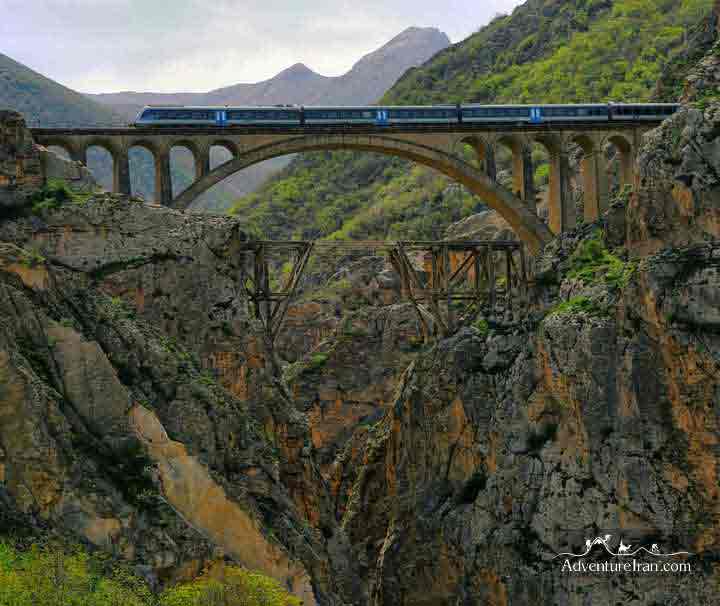
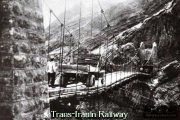
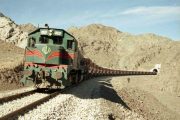
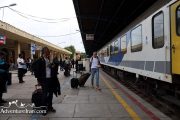
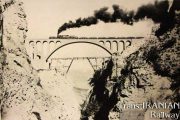

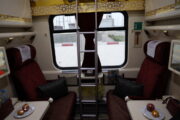

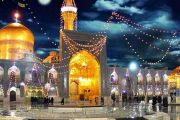
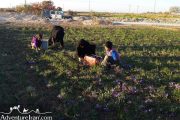
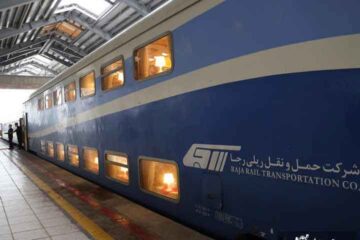
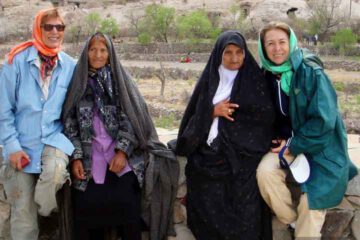
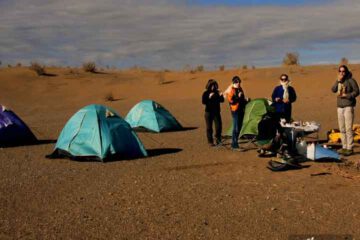
Tour Reviews
There are no reviews yet.
Leave a Review